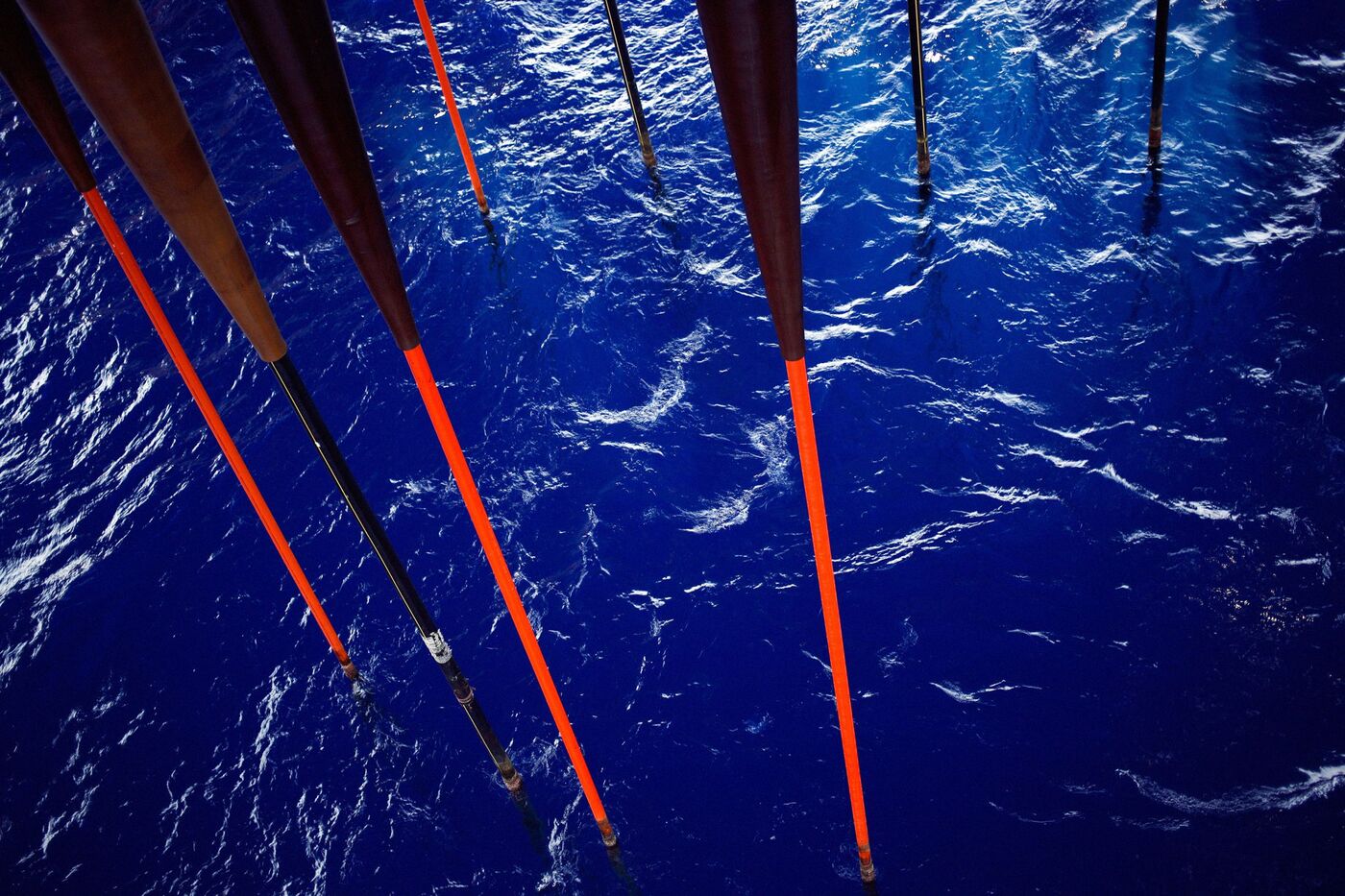ThinkProgress
Everybody hates Trump’s coal and nuclear bailout plan
Except the president’s favorite coal industry executive and a bankrupt nuke company.
Mark Hand June 7, 2018
 A truck delivers coal to a Pacificorp’s coal-fired power plant on October 9, 2017. Credit: George Frey/Getty Images
A truck delivers coal to a Pacificorp’s coal-fired power plant on October 9, 2017. Credit: George Frey/Getty Images
President Donald Trump’s fixation on bailing out the coal and nuclear power industries has proved confounding to renewable energy advocates and climate activists. But other sectors of the energy industry, including one that Trump purportedly wants to help, are also questioning the need for the radical intervention in energy markets proposed last week.
The White House issued a statement last Friday that said Trump has directed Energy Secretary Rick Perry to “prepare immediate steps to stop the loss” of what the administration described as “fuel-secure power facilities,” a thinly veiled reference to coal and nuclear power plants. Also last Friday, Bloomberg News released a leaked draft proposal from the Energy Department that cited national security concerns as a reason for allowing Trump to require regional grid operators or electric utilities to purchase enough power from coal and nuclear plants to prevent them from closing.
But most of the energy industry concedes there’s no emergency that requires the federal government to intervene on behalf of coal and nuclear power.
Speaking earlier this week at an industry conference, Chris Crane, the CEO of Exelon Corp, the nation’s largest owner of nuclear plants, said the retirement of coal and nuclear plants is not a grid emergency that warrants urgent intervention from the federal government.
The American Petroleum Institute (API), one of the president’s biggest industry supporters, also opposes Trump’s directive. The powerful oil and gas lobbying group has joined a diverse coalition that includes wind, solar, and energy storage trade groups to fight any proposed bailout of the coal and nuclear industries that may come from Trump’s Department of Energy.
The renewable energy industry worries about the bailout plan’s potential negative impact on its finances. Investment banks and private equity firms may become skittish about investing in energy sectors that are not on the receiving end of Trump’s handouts.
“It’s a very confused and conflicted and backward-leaning policy that is finding support in no quarters apart from the coal industry,” John Morton, senior fellow at the Global Energy Center at the Atlantic Council, told ThinkProgress. “It seems like a Hail Mary pass and a dangerous political gesture at best. There’s no support for it, not simply from the renewables industry but from most parts of the nuclear industry.”
Trump plan to bail out coal industry punishes red states the most

Morton was one of the speakers at an event on Thursday in Washington, D.C. — that offered a status update on the global move to a clean energy economy — sponsored by the Atlantic Council, the American Council on Renewable Energy (ACORE), and the Renewable Energy Policy Network for the 21st Century. Founded in 1961, the Atlantic Council is a think tank that focuses on international affairs.
In his interview with ThinkProgress, Morton asked why the Trump administration would seek to interfere in an electric power marketplace that is functioning fairly efficiently. “There is only one answer,” Morton said in response to his own question. “And it’s pure politics and it’s pure politics to a relatively small base. In the long run, it’s going to set us back in this race to a clean energy future.”
Tom Kiernan, CEO of of the American Wind Energy Association, pointed out at the event that despite claims of a pending catastrophe, the nation’s electric grid operators “are on the record saying that the orderly phaseout of some of these very expensive coal and nuclear plants does not constitute an emergency.”
Kiernan emphasized that coal and nuclear plants do not necessarily improve grid resilience, even though they have onsite fuel supply. During the polar vortex of early 2014, huge amounts of coal-fired plants stopped operating due in large part to frozen equipment.
Of the approximately 19,500 megawatts of capacity lost due to cold weather conditions, more than 17,700 megawatts was due to frozen equipment, according to a report on the polar vortex issued by the North American Electric Reliability Corp. There were also reports of frozen onsite supplies of coal that forced coal-fired generating facilities to shut down.
In 2011, a terrible cold snap in Texas led to frozen coal supplies and prevented equipment on some coal plants from operating properly, forcing coal units to shut down.
More recently, Hurricane Harvey knocked out two coal-fired power plants in Texas “because that wonderful onsite fuel was flooded,” Kiernan pointed out. Operators had to shut down a few wind farms in Texas due to tropical storm-strength winds. But other wind farms “powered right through” the storm, producing large amounts of electricity from the high wind speeds, he said.
Nuclear plants also often face unscheduled outages due to equipment failures or extreme weather, calling into question whether their continued operation creates a more resilient electric grid.
“The notion of promoting nuclear power on the basis of resilience is playing to its weakness,” argued Greg Wetstone, president and CEO of ACORE. “The one thing that history has demonstrated about nuclear power is that it is not resilient, and you can talk to the people at Fukushima about that.”
Morton also fears the Trump administration’s pro-fossil fuel policies are skewing policymakers’ views on renewable energy. The transition to a low-carbon economy is occurring at an extraordinarily fast clip, and one that is faster than most people realize, he told the audience.

David Livingston: “Making policy without good data is inefficient, sub-optimal and, when comes to climate and clean energy, dangerous.” Today at @AtlanticCouncil , @ACGlobalEnergy‘s John Morton kicks off our US launch of the @ren21 Global Renewables Status Report 2018, in partnership with @ACORE
There is “a dangerous gap currently between the perception of where we are in this transition to a low-carbon economy and the reality of how quickly that transition is occurring,” he said.
“If the U.S. pretends that we are playing in a world in which renewables is 2 percent of annual new energy installations and not 70 percent, which it was last year, you make a very different set of policy decisions about how to position your industry,” he said.
The lack of awareness of renewable energy’s rapid growth — and a bias toward fossil fuels — is ingrained in the thinking of Trump administration officials.
But Morton also cautioned that the current trajectory of the clean energy movement is still not occurring fast enough. “We’re not on a 2-degree pathway [set] in the Paris agreement goals,” he said. “And, of course, there are many people, myself included, that agree a 2-degree pathway is insufficient to save the world from the worst impacts of climate change.”
Those who do support Trump’s directive last week have telling motivations.
Murray Energy CEO Robert Murray, one of the few supporters of Trump’s bailout plan for the coal-fired generation, revealed the real reason he supports the initiative in an interview on Fox News Business on Thursday.
He pointed to the fact that coal’s share of the nation’s electric generation capacity is projected to drop from its peak of 58 percent three decades ago to 27 percent by 2020. This will undoubtedly have a negative impact on Murray Energy’s domestic revenues, even though the company is one of the most financially stable coal companies in the nation.
Top energy regulator points to problematic wartime language in Trump’s coal bailout plan

On Wednesday, E&E News shed new light on the close relationship between Murray and the Trump administration. The news service reported that Murray presented Trump administration officials with half a dozen draft executive orders in 2017 aimed at exiting the Paris climate agreement and reducing coal regulations.
Another one of the few supporters of Trump’s plan is FirstEnergy Solutions, the bankrupt nuclear plant-owning company that petitioned Perry earlier this year to use the emergency powers of the Federal Power Act to order regional grid operator PJM to bail out a long list of nuclear and coal power plants. At the time, NRG Energy, one of FirstEnergy’s competitors in the region, described the request as a “manufactured crisis.”
A new filing in FirstEnergy Solutions’ bankruptcy case detailed how lobbyists at Akin Gump, a powerful law and lobbying firm in Washington, D.C., spent hundreds of hours in April working on a renewed campaign to secure bailouts for the utility’s coal and nuclear power plants from the Trump administration and state lawmakers in Ohio and Pennsylvania.

 © Greg Nash
© Greg Nash Des Moines Register
Des Moines Register
 Pipes and mooring lines rise from the Gulf of Mexico beneath Chevron Corp.’s Jack/St. Malo deep-water oil platform about 200 miles off the coast of Louisiana on May 18, 2018. Photographer: Luke Sharrett/Bloomberg
Pipes and mooring lines rise from the Gulf of Mexico beneath Chevron Corp.’s Jack/St. Malo deep-water oil platform about 200 miles off the coast of Louisiana on May 18, 2018. Photographer: Luke Sharrett/Bloomberg Oil production equipment onboard Chevron’s Jack/St. Malo platform. Photographer: Luke Sharrett/Bloomberg
Oil production equipment onboard Chevron’s Jack/St. Malo platform. Photographer: Luke Sharrett/Bloomberg Platform supply vessel Kobe Chouest anchored alongside Jack/St. Malo. Photographer: Luke Sharrett/Bloomberg
Platform supply vessel Kobe Chouest anchored alongside Jack/St. Malo. Photographer: Luke Sharrett/Bloomberg Chevron workers examine hydrocarbon samples on Jack/St. Malo. Photographer: Luke Sharrett/Bloomberg
Chevron workers examine hydrocarbon samples on Jack/St. Malo. Photographer: Luke Sharrett/Bloomberg In this April 21, 2010, file photo, the Deepwater Horizon oil rig burns in the Gulf of Mexico following an explosion that killed 11 workers and caused the worst offshore oil spill in the nation’s history. President Donald Trump is throwing out a policy devised by his predecessor for protecting U.S. oceans and the Great Lakes, replacing it with a new approach that emphasizes use of the waters to promote economic growth. President Barack Obama issued his policy in 2010 after the Deepwater Horizon oil spill in the Gulf of Mexico. Trump says it was too bureaucratic. (AP Photo/Gerald Herbert, File)
In this April 21, 2010, file photo, the Deepwater Horizon oil rig burns in the Gulf of Mexico following an explosion that killed 11 workers and caused the worst offshore oil spill in the nation’s history. President Donald Trump is throwing out a policy devised by his predecessor for protecting U.S. oceans and the Great Lakes, replacing it with a new approach that emphasizes use of the waters to promote economic growth. President Barack Obama issued his policy in 2010 after the Deepwater Horizon oil spill in the Gulf of Mexico. Trump says it was too bureaucratic. (AP Photo/Gerald Herbert, File)